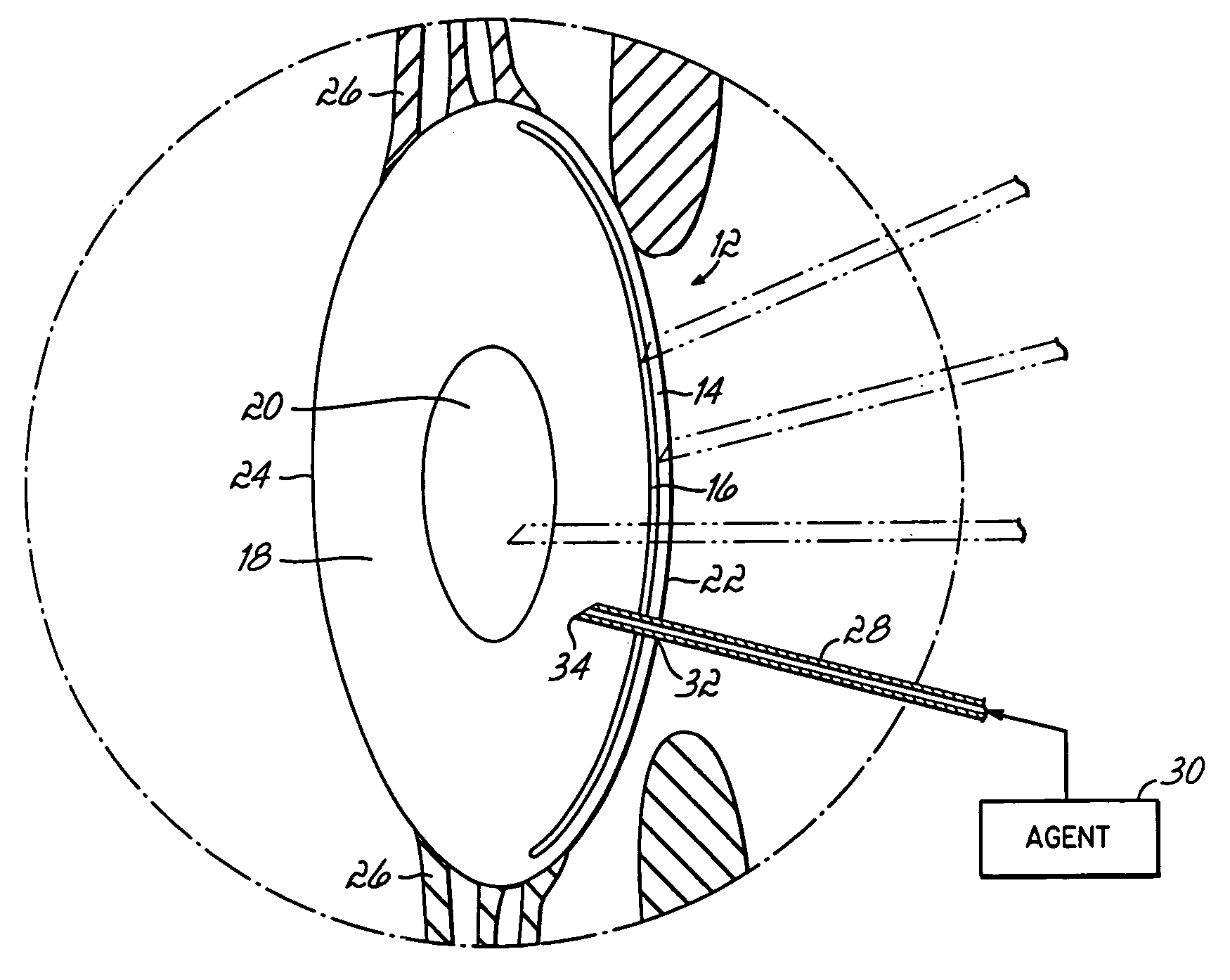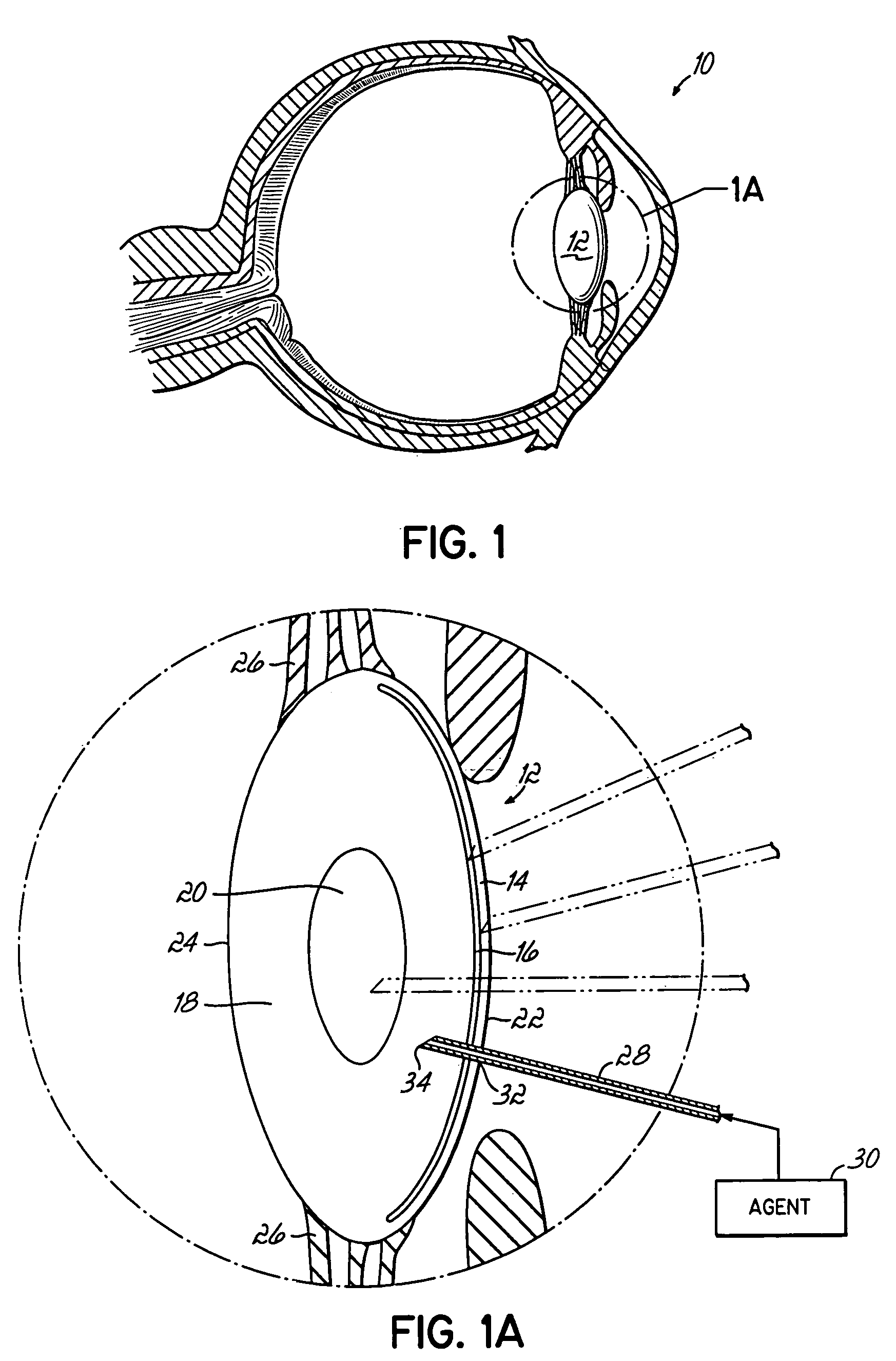Crystalline lens drug delivery
a technology of crystalline lenses and drug delivery, which is applied in the field of ocular drug delivery, can solve the problems of loss of visual acuity, cataract formation, and unfavorable consideration of penetrating the lens capsule to introduce drugs or other agents into the lens, and achieve the effect of minimizing the risk of cataract formation and less concern
- Summary
- Abstract
- Description
- Claims
- Application Information
AI Technical Summary
Benefits of technology
Problems solved by technology
Method used
Image
Examples
example
[0030]A 33 gauge needle penetrated the lens capsule and epithelium of a New Zealand white rabbit. The tip of the needle was positioned within the cortex. Fluorescein dye, contained within a barrel of the syringe coupled to the needle, was injected into the lens (0.1 μl-3 μl) by manual depression of the syringe plunger.
[0031]At eight weeks post-injection, the fluorescein solution had uniformly stained the entire lens, detectable upon visual observation. This indicated that the solution had disseminated from the single site of injection throughout the entire compact dense cellular material of the lens. Moreover, at eight weeks post-injection, there was no cataract formation observed upon ophthalmologic evaluation. There was minimal scarring and no evidence of permanent egress or ingress of fluid from inside or outside the eye at the injection site.
[0032]These data supported the likelihood that an agent, such as a vector containing a therapeutic gene, when injected into the lens, will ...
PUM
 Login to View More
Login to View More Abstract
Description
Claims
Application Information
 Login to View More
Login to View More - R&D
- Intellectual Property
- Life Sciences
- Materials
- Tech Scout
- Unparalleled Data Quality
- Higher Quality Content
- 60% Fewer Hallucinations
Browse by: Latest US Patents, China's latest patents, Technical Efficacy Thesaurus, Application Domain, Technology Topic, Popular Technical Reports.
© 2025 PatSnap. All rights reserved.Legal|Privacy policy|Modern Slavery Act Transparency Statement|Sitemap|About US| Contact US: help@patsnap.com


